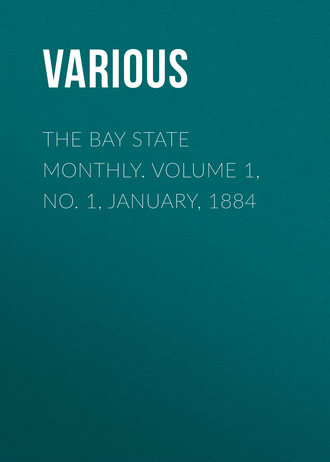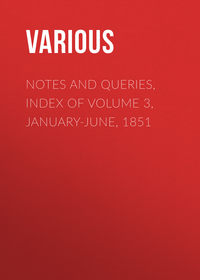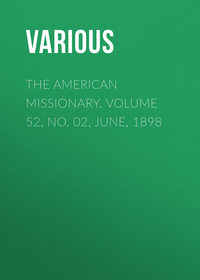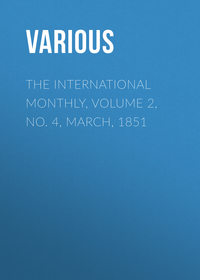 полная версия
полная версияThe Bay State Monthly. Volume 1, No. 1, January, 1884
The following is the theory which he entertained, in common with Washington, as to the proper method for prosecution of the war; and he so expressed himself, when he first encamped before Boston and united his destinies with those of America.
His words are worthy of double recognition by the citizens of the United States, because they not only furnish a key to the embarrassments which attended the uncertain policy of Congress during the Revolution, but they illustrate some of the embarrassments which attended the prosecution of the war of 1861-65.
First. "One general-in-chief."
Second. "Enlistments for the war."
Third. "Bounties for families of soldiers in the field."
Fourth. "Service: to be general, regardless of place of enlistment."
Fifth. "Money loans to be effected equal to the demands of the war."
Sixth. "A Declaration of INDEPENDENCE, with the pledge of all the resources of each Colony to its support."
Such was the spirit with which the American army hastened its operations before Boston. Every week of delay was increasing the probability that Great Britain would occupy New York, in force. The struggle for that city would be the practical beginning of the war anew, and upon a scientific basis.
Lord Dartmouth alone had the military sagacity to give sound advice to the British cabinet. He maintained that by the occupation of New York, and the presence of a strong naval force at Newport, Rhode Island (within striking distance of Boston), and the control of the Hudson River, the New England Colonies would be so isolated, as neither to be able to protect themselves, nor to furnish aid to the central Colonies beyond the Hudson River.
For the same reason, an adequate garrison at New York might detach troops to seize the region lying on the waters of the Delaware and Chesapeake, and thereby separate the South from the centre. When General Howe, in 1775, formally urged the evacuation of Boston and the occupation of New York and Newport, he also advised the seizure of "some respectable seaport at the southward, from which to attack seacoast towns, in the winter."
Washington never lost sight of the fact, that, while an important issue had been joined at Boston, its solution must be so worked out as to conserve the general interests of the Colonies as a Nation, and that the delay which was incident to scarcity of powder, and the resulting inability to assault the city, was to be employed, to the utmost, in preparing the troops for an ultimate march to New York, there to face the British in the field.
The reinforcement of General Howe, at midwinter, when an attack upon the American lines would be without hope of success, quickened Washington's preparations for crowding the siege, while constantly on the watch for some manifestation of British activity in other directions.
Within a week after the garrison of the city had been thus strengthened, Washington learned that Clinton had been detached, to make some expedition by sea. General Lee, then in Connecticut on recruiting service, was ordered to New York to put the city in a condition for defence, and arrived on the very day that Clinton anchored at Sandy Hook. Clinton, however, neglected his opportunity, and sailed southward to attack Charleston. Lee also went South, to co-operate with Governor Rutledge, in the defense of that city. The repulse of that expedition at Fort Sullivan (afterwards called Fort Moultrie) could not be known to Washington; but the knowledge that the British had enlarged their theatre of active war was a new stimulus to exertion.
The strain upon the American Commander-in-Chief, in view of this rapid development of hostilities beyond the reach of his army, was intense. Clinton had been authorized to burn all cities that refused submission. In a letter to Congress, Washington wrote: "There has been one single freeze, and some pretty good ice," but a council of war opposed an assault. At last he conceived an alternative plan, in the event that he would not have sufficient powder to risk a direct assault, and the two plans were balanced and matured in his own mind with the determination to act promptly, and solely, at his own independent will.
Few facts testify more significantly of the value to the army and the American cause of that long course of training, in the presence of the enemy, than the preparations thus made by Washington, without the knowledge of most of the officers of his command. He collected forty-five batteaux, each capable of transporting eighty men, and built two floating batteries of great strength and light draught of water. Fascines, gabions, carts, bales of hay, intrenching-tools, and two thousand bandages, with all other contingent supplies, were gathered, and placed under a guard of picked men.
Three nights of mock bombardment kept the garrison on the alert, awaiting an assault. "On the night of the fourth of March, and through all its hours, from candle-lighting time to the clear light of another day, the same incessant thunder rolled along over camps and city; the same quick flashes showed that fire was all along the line, and still, both camps and city dragged through the night, waiting for the daylight to test the work of the night, as daylight had done before."
When daylight came,—
"Two strong redoubts capped Dorchester Heights."
By the tenth of March, the Americans had fortified Nook's Hill, and this drove the British from Boston Neck. Eight hundred shot and shell were thrown into the city during that night. On the morning of March 17, the British embarked for Halifax.
Five thousand American troops entered the city, under General Ward (the venerable predecessor of Washington) as the last boats left.
On the eighteenth of March, and before the main army had entered Boston, General Heath was ordered to New York with five regiments of infantry and a part of the field artillery.
On the twenty-seventh, the whole army, excepting a garrison of five regiments, was ordered forward, General Sullivan leading the column.
On the evening of April fourteenth, after the last brigade marched, Washington started for his new field of duty.
The siege of Boston is indeed memorable for that patient, persistent pressure by which the Colonists grasped, and held fast, all approaches to the city, until a sufficient force could be organized for a systematic siege; but, as the eye rests upon an outline map of the principal works of the besieging force, and we try to associate Ploughed Hill, Winter Hill, Prospect Hill, and other memorable strongholds, with the surroundings of to-day, we are glad to find an abounding source of comfort in the assurance, that the whole struggle for our National Independence is indelibly associated with the names, the vigils, and the experiences which belong to those long months of education in the art and appliances of war.
Swiftly as that well-instructed army moved to New York, they had only time to gain position, before they realized the value of their training in the trenches and redoubts around Boston; and no battle or siege, including the capture of Yorktown, is without its tribute to the far-reaching influence which that training assured.
The echoes of the national salute which have so recently commemorated the one hundredth anniversary of the close of the official career of Washington as commander-in-chief of the army of the Revolution, may well be associated with those midnight salvos of artillery which crowned his first campaign with an enduring success, and, once for all, rescued the soil of the Bay State from the tread of a hostile foot.
THE RAILWAY MAIL SERVICE.3
BY COLONEL THOMAS P. CHENEY[Superintendent New England Division United States Railway Mail Service.]
It is not the purpose of this paper to give a history of the growth of this important branch of the government service, so much as to impart, perhaps to an indifferent degree, the methods of its intricate workings, and the care and study employed to expedite the vast correspondence of the country. A system as colossal as the Railway Mail Service of this country is, could not be organized but through a process of development meeting needs as they arise. This development is best shown by a comparative illustration from an early date to the present time.
In 1811, there were 2,403 post-offices, and during the year the mail was carried 46,380 miles in stages, and 61,171 miles in sulkies and on horseback. In Postmaster-General Barry's report for the fiscal year ending November 1, 1834, it is said, that, "The multiplication of railroads in different parts of the country promises within a few years to give great rapidity to the movements of travelers, and it is a subject worthy of inquiry whether measures may now be taken to secure the transportation of the mail upon them. Already have the railroads between Frenchtown in Maryland and New Castle in Delaware, and between Camden and South Amboy in New Jersey, afforded great and important facilities to the transmission of the great Eastern mail." The lines of railway at that time, 1834, amounted to seventy-eight miles.
In 1838, the Railway Mail Service began with 1,913 miles of railroad throughout the country. In 1846, mails were carried over 4,092 miles of railway, which increased in 1882 to 100,563 miles.
The miles of annual transportation of mail by railroad in 1852 amounted to 11,082,768, which increased to 113,995,318 in 1882, with an increase in the number of Railway Mail Service employees from 43 in 1846 to 3,072 in 1882. This wonderful expansion was but proportional with the development of the country at large. At the close of the war of the Rebellion, business was at its height. Industry and intelligence were seeking together new channels for their diffusion. The Pacific Railway was the grand conception that met this demand, and by its means were united the borders of the continent, and communication thus made more frequent and rapid between our interior, the West, and Europe: the most ancient civilization of the world in the Orient greeted the youngest in the Occident, and completed the girdle about the earth.
The lumbering stage and caravan laboring across the plains, and the swift mustang flying from post to post, frequently intercepted by the wily savage, were but things of yesterday, though fast becoming legendary. When those slower methods by which correspondence was conveyed at a great expense and delay, and current literature was to a great extent debarred, were supplanted by a continuous line of stages, it was considered a revolution in the wheel of progress, and the consummation. The possible accomplishments of the present day, if entertained at all at that time, were in general considered Munchausen, and not difficulties to be surmounted by practical engineering and undaunted perseverance. The civilization of the world has kept pace with its channels of communication and has accordingly rendered invaluable aid to it. In our country the field in this direction is exceedingly broad.
There is no branch of the government service that reaches so near and supplies the wants of the people as the Post-Office Department, and whose ramification may not be inaptly compared to the human system with its arteries filled with the life-current coursing through the veins and diffusing health and vigor to the various parts; in the same manner the people in the different sections of the country interchange their information. The centres of art and literature, conveying to the vast producing region in the West the products of their refined taste, scientific research, and mechanical achievements, keep alive and propagate the spirit of inquiry, making remote parts of the nation homogeneous in tastes, knowledge, and a common interest in all matters of national advancement.
If a map of the United States with every railway that crosses and recrosses its broad surface were laid before us, it would appear that a regulated system for an expeditious transmission of the mails in such an intricate confusion of lines, apparently going nowhere yet everywhere, would be an impossibility; but by study and untiring energy this has been accomplished.
The machinery of the Post-Office Department is a system of cog-fitting wheels, in all its component parts; and were it not so, in the necessarily limited period and space allotted, the work in postal-cars could not be successfully accomplished.
The interior dimensions of postal-cars vary, from whole cars sixty feet in length, to apartments five feet five inches in length by two feet six inches in width. The most comprehensive conception of the practical working of the postal-car system, can be formed in a railway post-office from forty to sixty feet in length; with this in view, we will make a trip in one. A permit to ride in the car, signed by the superintendent of the division of the service, is necessary to allow us the privilege; and it is also required of clerks belonging to other lines. This rule is necessary, in order that the clerks may perform their work uninterruptedly and correctly; and also to exclude unauthorized persons from mail apartments. After a hasty exchange of salutations with the four clerks, the "clerk in charge" notes our names on his "trip report," and we are assigned a spot in the contracted space, where, we are assured, we will be undisturbed, at least for a while. The trip report mentioned is used in noting connections missed, and other irregularities that may occur. The interior of the car is fitted up with a carefully-studied economy of space, upon plans made under the supervision of the superintendent of the division, or chief clerk of the line. Occupying one end of the car are cases of pigeon-holes, or boxes, numbering from six hundred to one thousand, arranged in the shape of a horse-shoe, for the distribution of letters. These boxes are labeled with the names of the post-offices on the line of road, connecting lines, States, and prominent cities and towns throughout the country. A long, narrow aisle passes through the centre of the car, on both sides of which are racks for open sacks and pouches, into which packages of letters and pieces of other mail matter are thrown; on the sides above are rows of suspended pouches, with their hungry mouths open. By this plan, in this contracted space, upwards of two hundred different pouches and sacks can be distributed into between the termini. On one side of the aisle is a narrow counter, upon which the mail matter is emptied from the pouches and sacks; this is hinged to the pouch-rack, and can be swung back, to enable the clerks to get at the pouches more easily. The space beyond, divided by stanchions, is for the stowage of mails, and for their separation into piles.

In order that a minute may not be lost, when passing through tunnels or standing in dark railway-stations, the lamps are kept burning from the start to the finish. The last wagon, gorgeously suggestive of a circus, has arrived with its load of mail, and the busy work receives at once a new impetus. Several loads, however, have already arrived, and have been disposed of as much as possible; for the work begins, in some cases, several hours before the starting of the train. Transfer clerks and porters deliver the pouches and sacks into the car, the label of each being scanned and checked by the clerks, to detect if all connections due are received, and that no mail may be delayed by being carried out on the road with the other mail and returned. The last pouch is scarcely received, when a sudden, but not violent, shock announces that the locomotive is attached to the train, and the start about to be made. The sound of the gong, seconded by the electrifying and resonant "Aboard!" of the conductor, and the post-office on wheels is under way. Now, all is a scene of bustle, but not confusion. The two clerks, to whom are assigned the duty of distributing direct packages of letters and newspaper mail, including merchandise, deftly empty the pouches, out of which pour packages of letters and circulars, to be distributed unbroken into pouches, and others labeled to this route and different States, which are in turn to be separated into packages by routes, States, and large towns, at the letter-case. To the clerk in charge is assigned the sorting of such letters as are destined to distant routes or terminal connecting lines; and his associate, or second clerk, is busy distributing letter mail for local delivery, and into separations for intermediate connections.
In addition to sorting letters, the clerk in charge has charge of the registered mail, which requires special care in its reception and delivery, booking and receipting therefor. Large pouches of registered mail are also placed in his charge, en transit between large cities, and represent great value. The peculiar tooting of the whistle, or a peculiar movement of the train around a curve, warns the fourth clerk, who is on the alert, of a "catch" station; the letter mail for that post-office is quickly deposited by the local clerk in the pouch, the lock is snapped, and he is standing at the door not a minute too soon or too late; the pouch is thrown out at a designated spot and one deftly caught an instant after without a slackening of the speed of the train. The pouch thus caught is taken to the counter, opened and emptied by the fourth clerk, and the letters immediately placed in the hands of the second clerk, who assorts the local mail; the through letters, or those destined to go over distant lines beyond the terminus, are sorted by the clerk in charge; the local, or second, clerk distributes his mail as rapidly as possible, with a watchful eye for letters, etc., to be put into the pouch to be delivered at the next station; the pouch is locked and everything is ready for the next delivery and "catch." When the stations at which pouches are caught are within a mile or two of each other, the greatest activity is needed to assort the mail between stations, to avoid carrying mail by destination and subjecting it to considerable delay before its delivery by a railway post-office on the train to be met at a point perhaps many miles ahead.

The manner of taking or "catching" the mail from the trackside by some invisible power on a railroad train plunging through space has seemed to many a feat of almost legerdemanic skill, when all that is required is a simple mechanical apparatus and a quick, firm movement of the arm in using it at the right moment. A crane similar in appearance to the oldtime gibbet is erected near the track, and may have served as a warning by its suggestive appearance to some would-be train-wrecker. Its base is a platform two feet and a half square, with two short steps on top to assist the person hanging the pouch; a post ten feet in height passes up through this platform near the edge; a stout joist about five feet in length is fixed across the top of the post and so balanced that when relieved of the weight of the pouch it flies up perpendicularly against the post. The pouch used for this purpose is made of canvas and is somewhat narrower than the ordinary leathern pouch. It is lightly suspended by a slender iron rod projecting from the horizontal joist, passed through a ring at the top and lightly held at the bottom in the same manner as at the top.

When the pouch is snatched from the crane, the top piece flies up as described, and a parallel short joist at the bottom of the pouch drops. The pouch is strapped small in the middle, resembling an hour-glass, where the catcher-iron on the car is to strike it. This "catcher" consists of a round iron bar across the door of the car, and placed in a socket on each side about shoulder high; a strong handle, similar to a chisel-handle, projects perpendicularly from this bar; on the under side of the bar projects, at an angle of about forty-five degrees, a slender and strong iron rod, slightly turned at the end to prevent its tearing the pouch, of about three feet in length. As the train approaches the crane, the operating clerk with a quick, steady throw delivers the mail at a given point, usually near the crane; he then grasps the handle with his right hand, swinging the handle over inward; the arm when thrown outward, the horizontal bar turning in the sockets, comes in contact with the pouch, striking that part of it narrowed by the strap and striking the arm near the vertex of the angle into which it is driven by the momentum of the train; the greater the speed the more securely it is held there; but the clerk is on the qui vive, and as soon as it strikes the catcher-iron, grasps the pouch to make sure of getting it, as sometimes if the pouch is not hung properly, the arm will strike it at such a part as to require the most agile movement on the part of the clerk to secure it and to prevent its falling to the ground or under the wheels of the train and being torn to pieces; these cases, however, are rare, but pouches have lodged on the trucks and have been carried many miles.
To return to the clerks and their work. In the meantime, the "through" work continues, when the distance between stations and junctions will allow of it; letters in packages are distributed into boxes with a celerity and economy of motion which could be acquired only by continued practice and training of the eye to decipher an ever-varying chirography, and of mental activity to almost instantly locate a post-office on its proper route, its earliest point of supply, or connecting line.
The emptying of pouches continues; package after package of letters roll out on the counter as though they were potatoes rather than the dumb expression of every human emotion, or the innocent touchspring of their awakening. The pouches are labeled to indicate those requiring the earliest attention, as are also the packages of letters they contain; this plan prevents, to a great extent, the carrying of mail past its destination.
The packages of letters to be distributed by routes, post-offices, and States, are taken to the letter-case; those not to be so separated, that is, unbroken packages, en transit, are placed at once into their proper pouches.
The emptying of sacks of paper mail follows that of the pouches; the papers and packages of merchandise are faced in a manner to be readily picked up, their addresses read, and deftly thrown into the mouths of the pouches and sacks in the racks; this is very skilfully done, as the want of space requires that they shall be crowded closely together.
The swaying of the train around a curve makes little difference, as the clerks in a short time learn to follow every motion of the train. A quick decision, ready eye, and economy of movement as a superstructure to a good knowledge of his duties, are the invaluable qualities of a successful railway postal-clerk; and one so equipped soon outstrips his lagging seniors and associates in grade. As the train approaches a junction, preparations are made to "close out" that part of the mail to be delivered at that point, the sacks are tied, the tags or labels having been attached before starting. The clerks at the letter-case are rapidly taking the letters from the boxes tying them into packages, and separating them into piles, which are dropped into their proper pouches and locked, and so on until all is ready. Let us examine these packages of letters and at the same time describe the slip system. On the outside of each package for redistribution, and also inside each direct package, that is, containing mail for a single post-office, is placed a brown paper slip, or label, about the size of an ordinary envelope, bearing its address or destination, which may be that of a post-office, a group of post-offices supplied therefrom, and labelled "dis." (the abbreviation of distribution), or for a railway post-office; this slip also bears the imprint of the name of the clerk who sorted into the package and is responsible for its correctness, the postmark with date, and a letter, as "N." for north, or "W." for west, indicating the direction the train is moving at the time. A similar slip is also placed loose in each pouch and sack.









